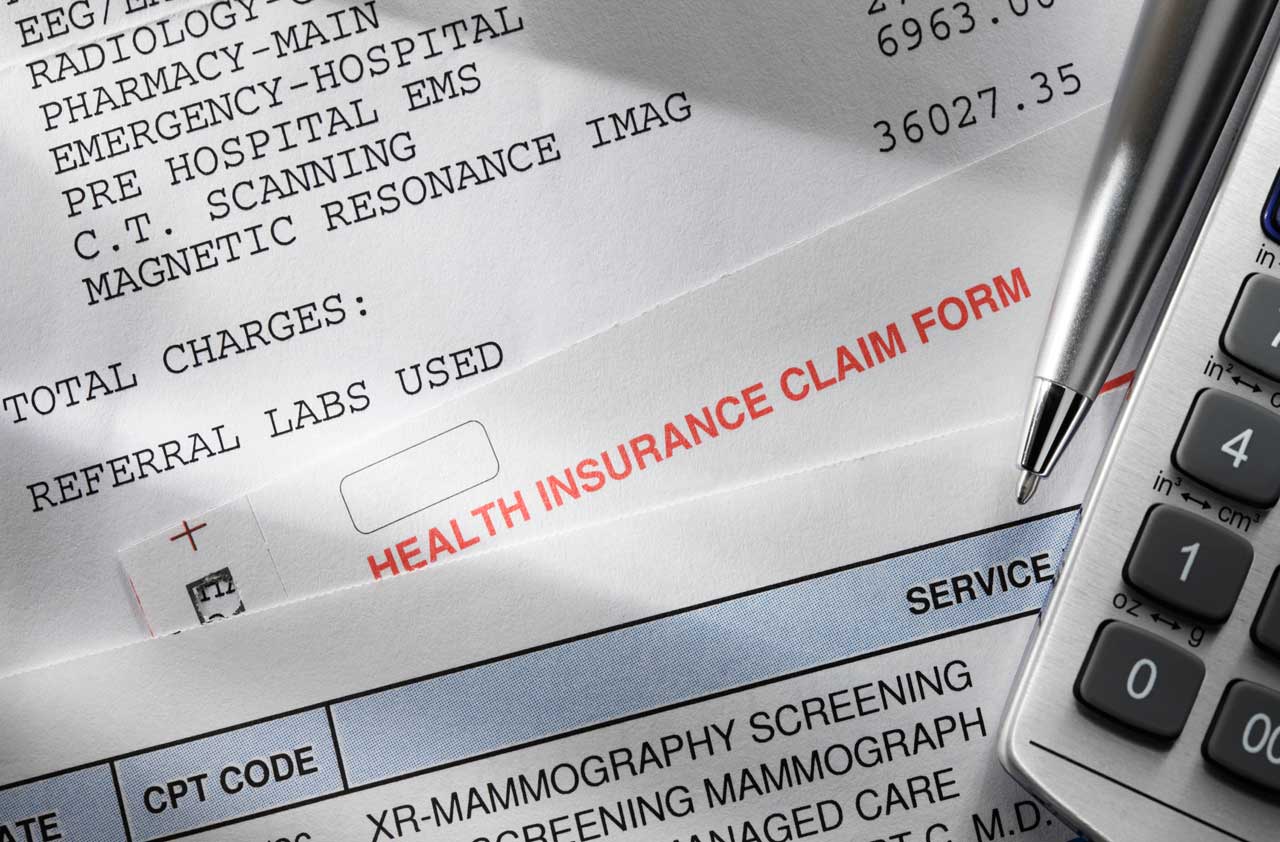26 Ways the New Tax Law Will Affect Your Wallet
The new year starts with a new tax law affecting every taxpayer in the land.

The new year starts with a new tax law affecting every taxpayer in the land. Now that a jubilant President Trump has signed the massive tax overhaul into law, it’s time for the number crunching to move from Capitol Hill to your kitchen table. Do the pros and cons found in the 500-plus pages of legislative language add up to good news or bad news for your family’s bottom line?
Here’s a look at key provisions of the new law that could affect everything from your family to your investments to your retirement planning. Most of the changes go into effect right away in 2018, but will NOT affect your 2017 tax return due in April. In almost every case, that return is covered by the old rules. Also, note that many of the changes affecting individuals are scheduled to expire after 2025. Unless a future Congress acts to extend them, most of these rules would revert to those in effect in 2017.

1. Bigger Standard Deduction, Goodbye Exemptions
A hallmark of the new law is the near doubling of the standard deduction to $12,000 on single returns, $18,000 for head-of-household filers and $24,000 on joint returns … up from $6,350, $9,350 and $12,700 in 2017. Congressional analysts say bulking up the standard deduction will let more than 30 million taxpayers avoid the hassle of itemizing write-offs on their tax return because the bigger standard deduction would exceed their qualifying expenses.
As under the old law, individuals age 65 or older and blind people get even higher standard deductions. Two 65-year-olds filing a joint return, for example, would add $2,600 to the $24,000 standard deduction, for a total of $26,600. An individual taxpayer age 65 or older would add $1,600, bringing the standard deduction to $13,600.
In exchange for the bigger standard deductions, personal exemptions (the $4,050 deduction for each exemption claimed on a 2017 return) are eliminated. So a married couple with four kids would lose $24,300 in exemptions in exchange for the $11,300 boost in their standard deduction. (Part of this would be made up via larger child credits discussed on the next slide.)

2. Say Hello to a Higher Child Tax Credit
Starting in 2018, the $1,000 tax credit for each child under age 17 is doubled to $2,000. For lower-income taxpayers, up to $1,400 of the credit is refundable, meaning that if the credit pushes your tax liability below $0, the IRS will write you a refund check of up to $1,400 per eligible child. Additionally, the new law significantly increases the income phase-out thresholds so that more higher-income families will pocket child credits. The credit begins to phase out for couples with adjusted gross incomes over $400,000 (up from $110,000 in 2017) and $200,000 for all other filers (up from $75,000).
In addition to the enhanced child tax credit, there is a new, nonrefundable credit of $500 for each dependent who is not a qualifying child including, for example, an elderly parent or disabled adult child. This credit would phase out under the same income thresholds.

3. Tax Bracket Bingo
The proposal to shrink the number of income tax brackets to four was left on the cutting room floor. The new law keeps seven tax brackets, but with different rates and different break points. For example, not only is the top rate lowered from 39.6% to 37%, but that rate also kicks in at a higher income level. And, note that whatever new bracket you fall in, more of your taxable income will be hit with lower rates. (On the other hand, restrictions or elimination of some tax breaks probably means more of your income will be taxed.)
Here are the 2017 tax brackets and the ones that will apply for year 2018.
Single Return
| 2017 Returns | 2018 Returns | ||
|---|---|---|---|
| Taxable Income | Tax Rate | Taxable Income | Tax Rate |
| Up to $9,325 | 10% | Up to $9,525 | 10% |
| $9,326 to $37,950 | 15% | $9,526 to $38,700 | 12% |
| $37,951 to $91,900 | 25% | $38,701 to $82,500 | 22% |
| $91,901 to $191,650 | 28% | $82,501 to $157,500 | 24% |
| $191,651 to $416,700 | 33% | $157,501 to $200,000 | 32% |
| $416,701 to $418,400 | 35% | $200,001 to $500,000 | 35% |
| Over $418,400 | 39.60% | Over $500,000 | 37% |
Joint Return
| 2017 Returns | 2018 Returns | ||
|---|---|---|---|
| Taxable Income | Tax Rate | Taxable Income | Tax Rate |
| Up to $18,650 | 10% | Up to $19,050 | 10% |
| $18,651 to $75,900 | 15% | $19,051 to $77,400 | 12% |
| $75,901 to $153,100 | 25% | $77,401 to $165,000 | 22% |
| $153,101 to $233,350 | 28% | $165,001 to $315,000 | 24% |
| $233,351 to $416,700 | 33% | $315,001 to $400,000 | 32% |
| $416,701 to $470,700 | 35% | $400,001 to $600,000 | 35% |
| Over $470,700 | 39.6% | Over $600,000 | 37% |
There are also new brackets for head of household filers as well as for married couples who file separate returns.
The indexing of the tax brackets and various tax breaks — designed to prevent inflation from surreptitiously pushing taxpayers into higher brackets — is altered by the new law. Currently, the tax brackets, standard deductions and many other tax items are adjusted annually based on the Consumer Price Index. Some economists have argued that the version of the CPI that has been used tends to overstate actual inflation because the formula doesn’t account for how people change their spending patterns as prices rise. They believe that a “chained” index is a better measure of inflation, and the new law switches to the chained CPI for future indexing. One thing for sure is that it will result in lower inflation adjustments, so there will be smaller annual increases in tax brackets, standard deductions and other breaks.

4. Squeezing Homeowner Tax Breaks
Lawmakers decided to reduce – from $1,000,000 to $750,000 – the amount of debt on which homeowners can deduct mortgage interest. The limit applies to mortgage debt incurred after December 15, 2017, to buy or improve a principal residence or second home. Older loans are still subject to the $1 million cap.
The law also bans the deduction of interest on home-equity loans. And this change applies to both old and new home-equity debt. Interest accrued on home-equity debt after December 31, 2017, is not deductible.
A proposal to extend the time you must own and occupy a home to qualify for tax-free profit when you sell it was dropped from the final legislation. As in the past, the law allows you to shelter up to $250,000 of such profit, or $500,000 if you’re married, as long as you have owned and lived in the house for two of the five years before the sale.

5. Deduction for State and Local Taxes
One of the most valuable tax deductions allowed for individuals — the write off for what you pay in state and local income, sales and property taxes — is getting squeezed.
Starting in 2018, the law sets a $10,000 limit on how much you can deduct of the state and local taxes you pay. A plan to limit the write-off to property taxes only was scrapped. You can deduct any combination of state and local income or sales taxes or property taxes, up to the $10,000 cap.

6. Casualty Losses
Going forward, the new law greatly restricts the opportunity for individuals who suffer unreimbursed casualty losses from sharing the pain with Uncle Sam. Under the old rules, such losses were deductible by those who itemize to the extent the loss exceeded $100 plus 10% of their adjusted gross income. Starting in 2018, the law allows a deduction of such losses only if they occur in a presidentially declared disaster area.
There’s the opposite of a crackdown for 2016 and 2017 losses in presidentially declared disaster areas, though. The new law permits individuals who suffered such losses to deduct the loss without reducing the write-off by 10% of adjusted gross income. To be deductible under this rule, the loss must exceed $500. Also, for covered losses, the deduction is available even for those who claim the standard deduction.

7. Estate Tax Dodges a Bullet (again)
Efforts to kill the federal estate tax fell short, but the new law doubles the amount that can be left to heirs tax-free in 2018, to about $11 million for singles and about $22 million for married couples. The amount will rise each year to keep up with inflation.
But, as with many changes in the law, this one expires at the end of 2025, when the tax-free amount will revert to earlier levels.
The law does not change the rule that “steps up” the basis of inherited property to its value on the date the benefactor died. As in the past, any appreciation during the life of the previous owner becomes tax-free.

8. Medical Deductions Survive . . . and Get Healthier
Despite efforts to eliminate the deduction for medical expenses, the new law is actually more generous than the old one. Under the old rules, medical expenses were deductible only to the extent they exceeded 10% of adjusted gross income. For 2017 and 2018, however, the threshold drops to 7.5% of AGI. Come 2019, the 10% threshold returns (unless Congress changes the rules again).

9. Alimony Becomes Tax Free . . . but Not Until 2019
A big change is coming for divorce. In the past, alimony paid under a divorce decree was deductible by the ex-spouse who paid it and treated as taxable income by the recipient. Starting with alimony paid under divorce or separation agreements executed after December 31, 2018, the reverse will be true: Payors will no longer get to deduct alimony, but the payments will be tax-free for the ex-spouse who receives them. (That’s the same rule that has and will continue to apply to child support payments.)

10. Status Quo for Teachers' Tax Break
The Senate wanted to double to $500 the tax deduction teachers can claim for using their own money to buy classroom supplies. The House wanted to eliminate this write-off all together. In the end, neither happened. The deduction, which you can claim even if you don’t itemize, stays at $250.

11. Squeezing Commuter Benefits
The new law eliminates, starting in 2018, the rule that allows employers to deduct up to $260 a month per employee for the cost of transportation-related fringe benefits, such as parking and transit passes. Employees can still use pre-tax money to cover such expenses, but employer subsidies may dry up. The new law also hits the bicycle commuter benefit that had allowed employers to provide employees up to $20 a month to cover bike-related expenses—that money's now taxable to the employee.

12. Tax Breaks for Students Survive
The effort by the House of Representatives to eliminate the deduction for interest paid on student loans and to begin taxing tuition benefits earned by graduate students were snubbed by the Senate. Neither proposal made it into the new law.
As under the old law, you can continue deduct up to $2,500 a year of interest paid on student loans. This write-off can be claimed by those who take the standard deduction, but it phases out at higher income levels. Also, tuition waivers and discounts received by graduate students retain their tax-free status.
The new law also declares that, if a student loan is discharged due to the borrower’s death or permanent disability, the amount forgiven will no longer be considered taxable income.

13. A Reprieve for Dependent Care Plans
The House of Representatives called for preventing working parents from setting aside pre-tax money in dependent care flexible savings accounts to pay for child care costs. The Senate blocked the effort, so the tax break remains in the law. Parents can continue to set aside up to $5,000, pre-tax, in these accounts. The money can be used to cover the cost of care of children under age 13 so that the parents can work.

14. No More Roth Do-Overs
The new law will make it riskier to convert a traditional individual retirement account to a Roth. The old rules allowed retirement savers to reverse such a conversion—and eliminate the tax bill—by “recharacterizing” the conversion by October 15 of the following year. That could make sense if, for example, the Roth account lost money. The move allowed savers to avoid paying tax on money that had disappeared. Starting in 2018, such do-overs are done for. Conversions are now irreversible.

15. Investors Retain Control Over Tax on Capital Gains
For a while, it looked like Congress might restrict the flexibility investors have to control the tax bill on their profits. Investors who have purchased stock and mutual fund shares at different times and different prices are allowed to choose which shares to sell in order to produce the most favorable tax consequences. You can, for example, direct your broker to sell shares with a high tax basis (basically, what you paid for them) to limit the amount of profit you must report to the IRS or, if the shares have fallen in value, to maximize losses to offset other taxable gains. (Your gain or loss is the difference between your basis and the proceeds of the sale.)
The Senate called for eliminating the option to specifically identify which shares to sell and instead impose a first-in-first-out (FIFO) rule. The oldest shares would be assumed to be the first sold. Because it’s likely that the older shares have a lower tax basis, this change would have triggered the realization of more profit sooner rather than later.
In the end, though, this idea fell by the wayside. Investors can continue to specifically identify which shares to sell.

16. 0% Capital Gains Rate Survives
The new law retains the favorable tax treatment granted long-term capital gains and qualified dividends, imposing rates of 0%, 15%, 20% or 23.8%, depending on your total income.
In the past, your capital gains rate depended on which tax bracket you fell in. But, with the changes in the brackets, Congress decided to set income thresholds instead. For example, for 2018, the 0% rate for long-term gains and qualified dividends will apply for taxpayers with taxable income under about $38,600 on individual returns and about $77,200 on joint returns.

17. Like-Kind Exchanges Survive ... But Only for Real Estate
Generally, an exchange of property is a taxable transaction, just like a sale. But the law includes an exception when investment or business property is traded for similar property. Any gain that would be triggered by the sale of such property is deferred in the case of a like-kind exchange. This break has applied to assets such as real estate and tangible personal property such as heavy equipment and artwork.
Going forward, though, the new law restricts its use to like-kind exchanges of real estate, such as trading one rental property for another. It’s estimated that the change will cost affected taxpayers more than $30 billion over the next ten years.

18. Fewer Taxpayers Need Fear the AMT
Originally, both the Senate and the House bills called for eliminating the individual alternative minimum tax, a parallel tax system developed more than 40 years ago to ensure that the very wealthy paid some tax. Taxpayers who might fall into the AMT zone have to calculate their taxes twice to determine which system applies to them. In a last-minute change, though, the new law retains the individual AMT, but limits the number of taxpayers ensnared by it by significantly hiking the AMT exemption and the income level at which it begins to disappear. (The new law does abolish the corporate AMT.)

19. Tax Relief for Passthrough Businesses
The new law slashes the tax rate on regular corporations (sometimes referred to as “C corporations”) from 35% to 21%, starting in 2018. The law offers a different kind of relief to individuals who own pass-through entities—such as S corporations, partnerships and LLCs—which pass their income to their owners for tax purposes, as well as sole proprietors who report income on Schedule C of their tax returns. Starting in 2018, many of these taxpayers can deduct 20% of their qualifying income before figuring their tax bill. For a sole proprietor in the 24% bracket, for example, excluding 20% of income from taxation has the same effect of lowering the tax rate to 19.2%.
The changes to the taxation of pass-through businesses are some of the most complex provisions in the new law, in part because of lots of limitations and antiabuse rules. They’re designed to help prevent gaming of the tax system by taxpayers trying to have income taxed at the lower passthrough rate rather than the higher individual income tax rate. For many pass-through businesses, for example, the 20% deduction phases out for taxpayers with incomes in excess of $157,500 on an individual return and $315,000 on a joint return. At the end of the day, most individuals who are self-employed or own interests in partnerships, LLCs or S corporations will pay less tax on their passthrough income than in the past.
We presented the following three scenarios to officials at the National Federation of Independent Business, in each case assuming a joint return and that other income does not trigger the high income phase out:
- A yoga instructor whose only income is $35,000 of self-employment income reported on Schedule C.
- A freelance writer whose only income is $120,000 of self-employment income reported on Schedule C.
- A consultant who establishes a single-member LLC and whose only income is $250,000 earned from a variety of clients and reported on Schedule C.
In each case, the NFIB says the 20% deduction would apply.

20. Deductions (That Lots of People Take) Get the Ax but Two Credits Survive
The new law eliminates a popular deduction for moving expenses. The deduction, which was available to itemizers and non-itemizers, allowed taxpayers to deduct the cost of a job-related move. Going forward, only members of the military can claim it.
The new law also repeals all miscellaneous itemized deductions subject to the 2% of AGI threshold, including the write-off for tax preparation fees, unreimbursed employee business expenses and investment fees.
The House of Representatives version of the tax overhaul wanted to scrap the credit for the elderly and the disabled, which is worth up to $1,125 to qualifying low-income taxpayers. It also unplugged the credit for plug-in electric vehicles, which is worth of up $7,500. The Senate refused to go along, though, so both tax breaks will continue.

21. Kiddie Tax Gets More Teeth
Under the old law, investment income over a modest amount earned by dependent children under the age of 19 (or 24 if a full-time student) was generally taxed at the parents’ rate, so the tax rate would vary depending on the parents’ income. Starting in 2018, such income will be taxed at the same rates as trusts and estates, which are far different than the rates that apply to individuals. The top 37% tax rate in 2018 kicks in at $600,000 for a married couple filing a joint return, for example. That same rate kicks in at $12,500 for trusts and estates ... and, now, the kiddie tax, too.
But that doesn’t necessarily mean higher taxes for a child’s income that falls victim to the kiddie tax. Consider, for example, a situation in which a child has $5,000 of income subject to the kiddie tax and that the parents have taxable income of $150,000. In 2017, applying their 25% rate to the $5,000 would have cost $1,250. If the old rules still applied, using the parents’ new 22% rate would result in an $1,100 tax on that $5,000 of income. Applying the new trust tax rates produces a kiddie tax bill of just $843 on the child’s investment income.
The kiddie tax applies to investment income over $2,100 of children under age 19 or, if full-time students, age 24.


23. Wither Withholding?
The new law is causing quite a ruckus in payroll offices around the country. Under the old law, the amount of tax withheld from paychecks was based on the number of allowances employees claimed on W-4 forms. And, the number of allowances was tied closely to the number of exemptions the worker claimed on his or her tax return. Starting in 2018, there are no exemptions, so there’s a mad scramble going on to figure out how to set withholding under all the new rules.
The new law orders the Secretary of the Treasury to come up with a new system, but also says 2018 withholding can be based on the old rules. Keep an eye out on this one.


25. Expanded ABLE Accounts
The law expands the uses of these tax-advantaged accounts, which allow families to put aside up to $14,000 a year to cover expenses for a beneficiary with special needs. The money can be used tax-free for most expenses, and account assets of up to $100,000 don’t count toward the $2,000 limit for Supplemental Social Security Income benefits. Under the new law, ABLE beneficiaries will be allowed to contribute their own earnings to the account once the $14,000 contribution limit for gifts by others has been reached.
The law also allows parents and others who established a 529 plan for a disabled beneficiary to roll the money into an ABLE account for that individual. However, the rollover would count toward the $14,000 annual contribution limit.

26. Relief for Some 401(k) Plan Borrowers
The new law would give employees who borrow from their 401(k) plans more time to repay the loan if they lose their jobs or their plan is terminated. Currently, borrowers who leave their jobs are usually required to repay the balance in 60 days to avoid having the amount outstanding treated as a taxable distribution. Under the new law, they will have until the due date of their tax return for the year they left the job.
Profit and prosper with the best of Kiplinger's advice on investing, taxes, retirement, personal finance and much more. Delivered daily. Enter your email in the box and click Sign Me Up.

-
 Ask the Editor: Itemized Deductions
Ask the Editor: Itemized DeductionsAsk the Editor In this week's Ask the Editor Q&A, Joy Taylor answers questions on itemized deductions claimed on Schedule A of Form 1040
-
 9 Types of Insurance You Don't Need
9 Types of Insurance You Don't NeedFinancial Planning If you're paying for these types of insurance, you may be wasting your money. Here's what you need to know.
-
 Are You Putting Yourself Last? The Cost Could Be Your Retirement
Are You Putting Yourself Last? The Cost Could Be Your RetirementIf you're part of the sandwich generation, it's critical that you don't let the needs of your aging parents come at the expense of your future.
-
 Retirees in These 7 States Could Pay Less Property Taxes Next Year
Retirees in These 7 States Could Pay Less Property Taxes Next YearState Taxes Retirement property tax bills could be up to 65% cheaper for some older adults in 2026. Do you qualify?
-
 Estate Tax Quiz: Can You Pass the Test on the 40% Federal Rate?
Estate Tax Quiz: Can You Pass the Test on the 40% Federal Rate?Quiz How well do you know the new 2026 IRS rules for wealth transfer and the specific tax brackets that affect your heirs? Let's find out!
-
 5 Types of Gifts the IRS Won’t Tax: Even If They’re Big
5 Types of Gifts the IRS Won’t Tax: Even If They’re BigGift Tax Several categories of gifts don’t count toward annual gift tax limits. Here's what you need to know.
-
 The 'Scrooge' Strategy: How to Turn Your Old Junk Into a Tax Deduction
The 'Scrooge' Strategy: How to Turn Your Old Junk Into a Tax DeductionTax Deductions We break down the IRS rules for non-cash charitable contributions. Plus, here's a handy checklist before you donate to charity this year.
-
 Tax Refund Alert: House GOP Predicts 'Average' $1,000 Payouts in 2026
Tax Refund Alert: House GOP Predicts 'Average' $1,000 Payouts in 2026Tax Refunds Here's how the IRS tax refund outlook for 2026 is changing and what steps you can take now to prepare.
-
 New IRS Changes to FSA Contribution Limits for 2026: What to Know
New IRS Changes to FSA Contribution Limits for 2026: What to KnowHealth Care Flexible Spending Accounts have tax advantages worth looking into, especially in light of new IRS changes.
-
 Is a New $25,000 Health Care Tax Deduction Coming in 2026?
Is a New $25,000 Health Care Tax Deduction Coming in 2026?Tax Policy A proposal from GOP Sen. Josh Hawley adds to the chatter about health care affordability.
-
 Are New Trump $2,000 Stimulus Payments Coming in 2026? What to Know Now
Are New Trump $2,000 Stimulus Payments Coming in 2026? What to Know NowTax Policy A promise of $2,000 tariff dividend checks is raising questions and fueling confusion.



